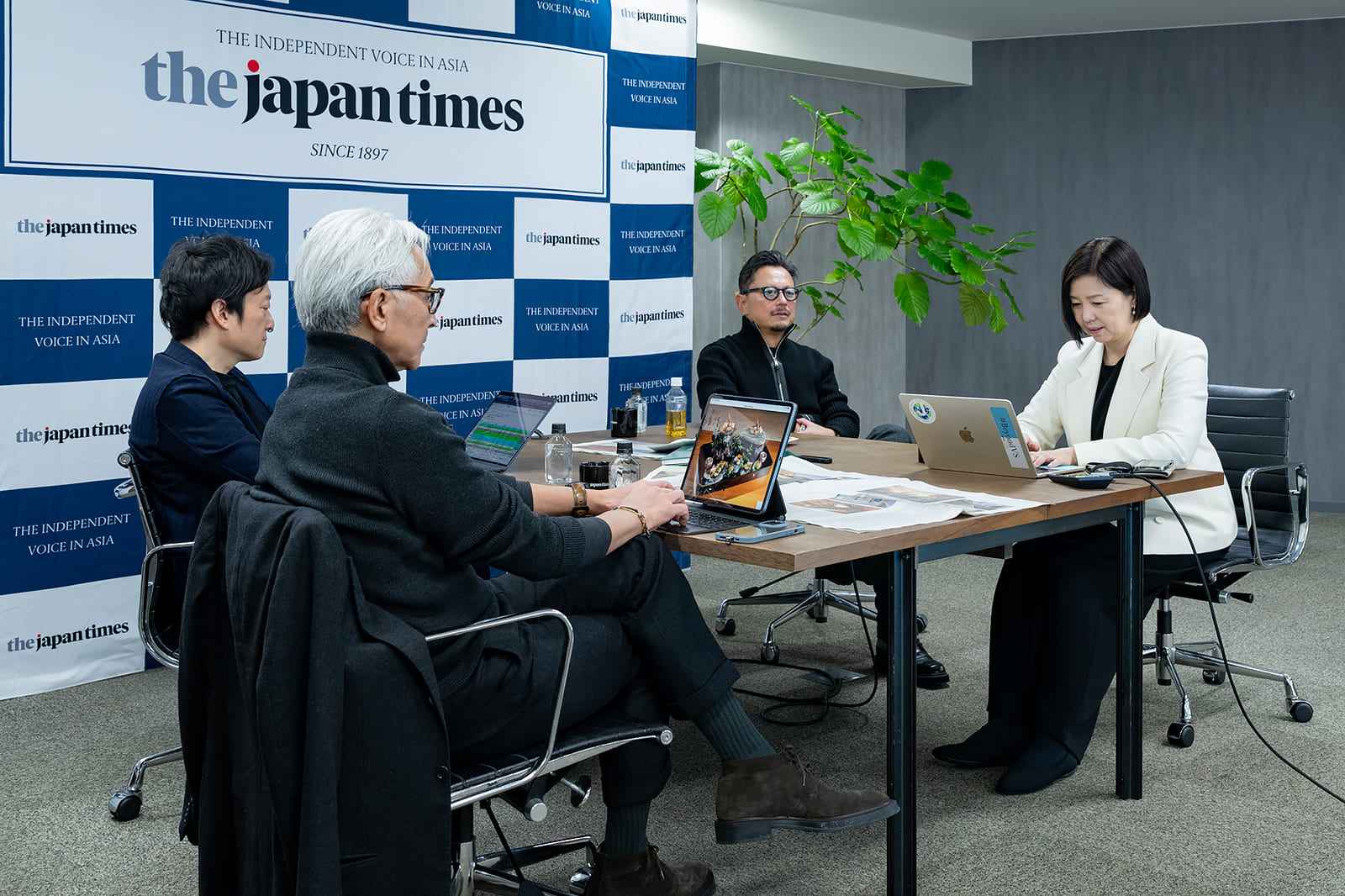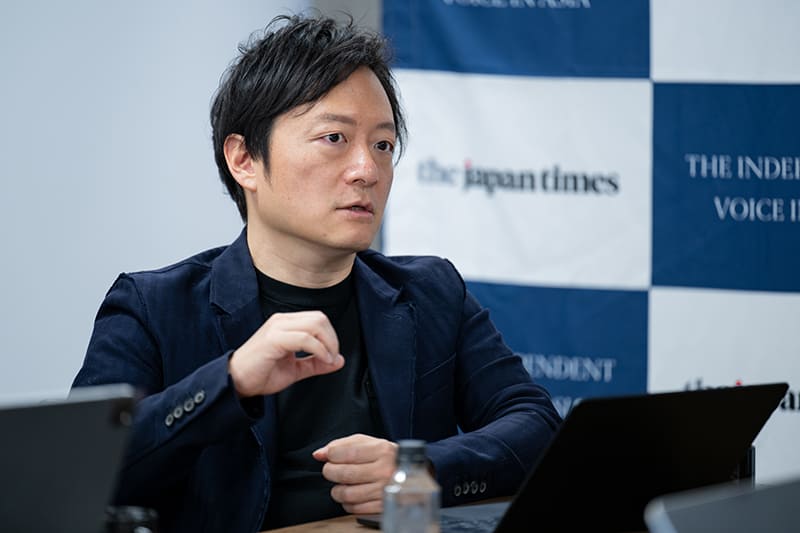DESTINATION RESTAURANTS
By TAEKO TERAO
In early February, the main offices of The Japan Times in Tokyo hosted a meeting to select the winners of Destination Restaurants 2025, the program’s fifth year. Serving as judges again this year were Yoshiki Tsuji, Naoyuki Honda and Takefumi Hamada. While eating their way across Japan, they singled out more than 100 candidates, which they narrowed down to around 30 before selecting this year’s 10 winners. Restaurants of all genres were eligible, so long as they were not among the 40 previously chosen in the competitions between 2021 and 2024 and were not in the 23 wards of Tokyo or any “ordinance-designated city” (with populations over 500,000).
In addition to checking out the steady stream of new openings across Japan, the three judges returned to restaurants that had previously been listed as candidates but had been passed over as not quite ready, in order to see how they had developed since then. As a result, the panel selected Toyama Prefecture’s Himawari Shokudo 2 as the Destination Restaurant of the Year 2025.
“It would be fair to say this prize is also an accolade to the chef’s skill,” Tsuji said. “While the dishes created by Himawari Shokudo 2’s owner-chef, Hozumi Tanaka, are simple, his fundamental skills are rock-solid. And once the chef himself becomes aware of this, he’s bound to grow further.”
Honda’s particular favorite this year was Farm Restaurant Cuore, located on a sheep farm in Hokkaido, which he described in glowing terms. “This farm raises amazing sheep — it does everything from raising them to processing and cooking them,” he said. “It’s a precious example of a place where you can eat fresh sheep offal.”
This year also saw the first appearance on the list by an eatery in Shikoku, where the paucity of gastronomic restaurants has previously been noted. The restaurant in question is Ehime Prefecture’s Kurumasushi. Hamada had this to say about it: “Over the last two to three years, the quality of the food has improved dramatically, and it’s developed into a restaurant that attracts visitors who are willing to make long journeys specifically to dine there. It’s one of Japan’s top 10 restaurants upholding the orthodox Edomae style of sushi.”
If skills previously concentrated in big cities spread to the provinces, the appeal of Japan as a whole will grow. That much is obvious from this selection of 10 restaurants.


Headmaster of the Tsuji Culinary Institute and president of the Tsujicho Group
When we as judges select a particular restaurant and chef, we are also recognizing the region as a whole represented by their cuisine. The chefs of regional Japan have evolved in order to attract guests who will go all the way to visit them, and we gained a renewed sense this year of their hidden strength and technical ability. For example, it takes technical skill to create gastronomic dishes from underutilized fish and other ingredients that were once discarded.
The chefs selected for Destination Restaurants are some of the most capable in Japan, demonstrating outstanding skills and creativity. The existence of these standout eateries is also a powerful tool supporting the national policy of attracting inbound tourists.
Having overcome various difficulties, the 50 chefs selected for Destination Restaurants over the last five years are also survivors in a way — they have gotten to grips with tasks that only a chef can accomplish, namely creating cuisine and cultivating producers. Through this award, we want to support these skilled culinary technicians, who represent and enlighten their regions via their dishes. We hope this award serves as a catalyst that gives them greater influence and helps them to transform food in their local area. This influence owes everything to the validation of their skill, and is essential for them to forge ties with other chefs and producers.
Taizo Hirokado, proprietor of Nihon Ryori Beppu Hirokado in Oita Prefecture, and chef Shota Itoi of Ishikawa Prefecture’s Auberge Eaufeu are both still young, so one could say they are still developing as figures in the culinary world. However, as they both have sound skills, we expect they will become even more accomplished in their fields. An individual’s personality and life ultimately are expressed in their cuisine. We would like to see them further enhance their creativity through their experiences in regional Japan.

President and CEO, Leverage Consulting Inc.
Chefs have come to understand that people will make the effort to visit provincial areas if they make tasty dishes, and the number of chefs going independent in regional Japan has been increasing by the year.
This trend has become particularly prominent this year. A number of the candidates this time round were restaurants that are hard to get to. While it might be tough for people to travel to such eateries, even a single gastronomic restaurant can have a huge impact on areas facing the problem of depopulation. That is because once one restaurant is established, others will follow in their wake — examples of this phenomenon can be seen all over Japan.
At the same time, the number of places in Tokyo’s bedroom suburbs that are worthy of inclusion in Destination Restaurants is also on the rise. It is interesting to see that Saitama Prefecture’s Restaurant Kam offers dishes that make plentiful use of vegetables from its own kitchen garden and wild plants gathered nearby, even though it is located just an hour or so from Shinjuku by train.
The question of how provincial restaurants can reduce costs to make up for the difficulty in attracting diners is key to their survival as businesses. While ingredients are cheaper, there are many worries beyond costs — for instance, growing one’s own vegetables requires labor, and a disaster could wipe out one’s entire crop.
Inaka no Taiho might be located in Kyoto Prefecture, but it is a long way from the center, in the city of Ayabe. There, I myself had the experience of wringing the neck of the chicken I was going to eat and having it cooked by the chef when it had only just breathed its last. It truly brought home to me that food means taking the lives of other living things. It was something you could never experience in the city. The same can be said of Farm Restaurant Cuore, located at the Charo Sheep Farm, which raises amazing sheep. The way in which chefs in some regions engage with food has become even more ambitious.

CEO, Access All Areas Inc.
This year, we were able to include restaurants in prefectures that had never previously made the list. In addition to Saitama, which does not have much of a reputation for fine dining, the selections included venues in Ehime, Kagoshima and Ibaraki, which are famous as food-production areas but have few gastronomic restaurants.
As such, we feel the standard of food throughout Japan is improving. There is close collaboration among Toyama’s leading restaurants, including Himawari Shokudo 2 and the Destination Restaurant of the Year 2021, Cuisine régionale L’évo. Similarly, chefs in Ibaraki Prefecture have been forging ties that transcend culinary genres for a number of years. Restaurants in the prefecture have been implementing interesting initiatives, such as events offering dishes that not only use local ingredients, but are also based on recipes handed down from the Tokugawa clan, which ruled the local Mito domain back in the Edo Period. We selected Tsukuba City’s Nonna Nietta as a leading example of these restaurants, but we hope that other restaurants in the prefecture will follow in its footsteps.
Having a number of high-level restaurants within the same area opens up possibilities for arranging gastronomy tours, which also leads to opportunities to host visitors from overseas. Kagoshima’s Senti.U uses meat and fish from the prefecture’s Osumi Peninsula, but vegetables make their presence felt in every single dish. Its distance from urban areas essentially means visitors need to hire a car at Kagoshima Airport to get there, but it was so wonderful, I wished I had visited much sooner. The cuisine is not flamboyant, allowing the natural flavors to speak for themselves without going overboard on seasonings, but that is precisely why it has my backing. We look forward to continuing to shine a light on as-yet-unsung chefs who are giving it their all in regional Japan.